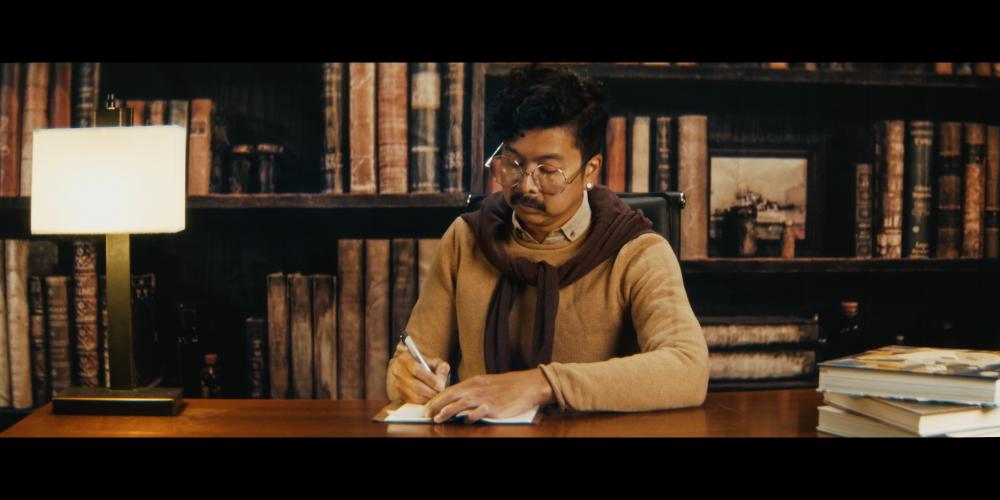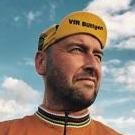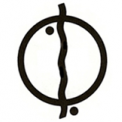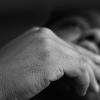Leaderboard
Popular Content
Showing content with the highest reputation on 07/23/2017 in all areas
-

Actually you can make the GH5 look very cinematic!
Jimbo and 5 others reacted to AaronChicago for a topic
6 points -
@TheRenaissanceMan My recommendation for a cheap shotgun is the 600. Buy with no fear at all, the value for money is incredible, there is also a softie kind of wind reduction accessory sold by Sennheiser for cheap. ME66 were my previous recommendation a decade ago, but right now, for most people I believe the 600 is just perfect. The 440 is a very interesting microphone for camera people, is a stereo mic consisting with 2 shotgun mics. From a closer distance it can be all you need for a small group of people (2-3 people), or more directional scratch/atmosphere sound. From whatever I have heard on the internet I wouldn't buy a Deity microphone, I would prefer a Rode, or a Sennheiser (I do buy Sennheiser mostly, but sadly, I am not a brand ambassador). @squig If you don't mind size, the Rodes are excellent (and very cheap) wireless systems. For videographers out there, the Sennheiser AVX is an amazing little (literally) wireless system, and if you buy the expensive version, comes with an amazing lavalier mic. @Richard Bugg try to avoid a shotgun for indoors. Too much hassle later on and reflection issues would be a 70%-80% certainty. If you can't afford expensive, an Audix or an Oktava can be a better solution. Here in Europe we are using the DR10 as safety recorders together with G3 wireless systems (they have an IN and OUT connection, so you record whatever comes from the G3, and then send the sound to the wireless receiver). Because of Zaxcom law suit, they had to remove this ability to US products. They are good as stand alone recorders, and some times if you wouldn't do anything in any way (let's say, in a wedding, usually you can't stop the ceremony just to fix the microphone), then it is an ok solution, and cheaper than any wireless system.2 points
-

Micro Doc - Craig Fraser
PannySVHS and one other reacted to Matt Kieley for a topic
Thanks, that's very encouraging! All you do to make it seems like a curved dolly is set up the slider like you would for any lateral slide, but begin with the camera at a 45 degree angle, and end it on a 45 degree angle, panning the camera as you track.2 points -
Also, "active busy restaurants" have enough bodies, coats and other stuff to cut reflections anyway! Human bodies are very good to kill sound and light waves. Not radiation so much! CS3e is a special mic anyway. Sound blankets are a good tool to help a bit.1 point
-
Sometimes I use my Sanken CS3e indoors when the conditions I'm given are truly TERRIBLE, such as in an active busy restaurant. Thus if the location was perfectly silent (HAHAHAHA!!), my Sanken CS3e wouldn't be the right choice, but because of the sheer background noise levels I use it anyway rather than a hypercardioid.1 point
-
I only read about the regular SLR Magic 17mm T1.6, a regular M43 lens, covering m43 sensor. Didnt know there was a special one for the BMPCC. This is the lens I read about: http://www.thephoblographer.com/2014/02/03/review-slrmagic-17mm-t1-6-micro-four-thirds/ An interesting lens for shooting letterboxed 1:2.35 with the BMPCC is the Mir 11m:1 point
-
Yes, yes, yaw. Thanks to Seb Farges and his awesome videos I got myself an awesome SLR Magic 12mm T1.6 now! Yeeehaw! @jonpais, now we can do a battle of the 12mills. Oly 12mm 2.0 anyone?:) I am so happy, my first native lens in two years. My list now: classic 14-45mm, Panny 20mm 1.7, Oly 45 1.8 and soon in my hands SLR Magic. Magic! Nice vibe, really! One of the nice vibes masters is Seb Farges.1 point
-
Of course the mighty Iscorama 54 is the best bet for Super 8. It was built for that purpose. Works great with the high quality Schneider zooms you could find on many different Super 8 cameras especially the better ones (Leicina, Braun, Beaulieu, Movexzoom, Fujica ZC, Nikon, Canon). But this is quite expensive. I have another suggestion but I am not sure if this will work (I sold my Sankor 16F about 6 years ago...): The tiny and cheap Canon 310 XL-S is a great camera and has a very small zoom lens. This could reduce vignetting significantly. This could be a cheap alternative. Good luck!1 point
-
I assume you're inquiring for a Pocket cam? If so, and you're using the BMPCC Metabones speedbooster, have you considered the Sigma 17-50mm f2.8? In EF mount, with the speedbooster, you'll have a nice range that's smaller, lighter with OIS. And I guess it would be a... 1.6?1 point
-
Well... physics and schtuff. You want one thing? Ya can't have the other. Such is life. Alternatively people pick up a Panasonic 12-35mm f/2.8. Of course it's a trade-off. You win some... you lose some. The Sigma just combines stellar quality with crazy sensitivity in its zoomrange... but to allow it to perform like that, it has to be big 'n heavy and unfortunately that means the smaller you want to go, the more you'll have to sacrifice. What I imagine they could do is reduce the range... like a MFT 12-24mm f/2 with both fair quality and decent dimensions/weight should be possible? But then you sorta get to a range that's not flexible enough for most people... and you might just go and use primes faster than f/2.8 already...1 point
-

Panasonic Lumix G80 / G81 unlimited recording
Frank Sonneberg reacted to BTM_Pix for a topic
It is basically some additional setup that can be done when the camera is sent in for repair. The primary useful function for end users is for PAL users to get the additional frame rates by changing the region code. As far as I understood, the Australian version of the GX80 did not have the record time limit but there doesn't seem to be a way to get to setting up a European GX80 for example to be Australian from the region change so the best you can achieve from using the service mode (and its not a bad trick) is to get the extra frame rates. There are also some additional diagnostic functions for errors which may be useful if you're suffering from card errors and want to determine yourself if its the cards or the camera before you send it in for repair. It also lets you save and load ROM stuff but that is for saving and restoring user settings prior to and post repair as far as I can tell. Here is the GX80 service manual if you want to explore it yourself. All the Lumix cameras have the same service mode so its applicable for everyone https://www.apotelyt.com/doc-pdf/panasonic-gx85-service-manual.pdf1 point -
That, and what IronFilm said a few posts above. No, it isn't a better solution. You need a (super) hypercardiod, and a few top professionals use even cardioid microphones. Ones I recommend (from cheapest in Europe, in US Audix is cheaper): Oktava 012 AKG Blue line/CK93 capsule Audix SCX1HC (stands for hyper cardioid) Audio technica 4053B Sennheiser 8040/8050 Sennheiser 40/50 Schools CMC6 MK41 I have limited experience with Sanken and DPA (I do use lavalier and shotguns from time to time) but DPA microphones can be near the top in all the categories they compete. My choices from poor to richer would be Oktava - Audix - Sennheiser (yeah, without a number after it!). @squig just excellent microphones. As I work in Europe, Sennheiser is a more safe bet, and more desired by producers/directors.1 point
-
Sometimes a shotgun can sound ok indoors, but at their core shotgun exist to because they reject (to an extent) the sound coming in from the sides. Think about a room with a lot of hard reflections, think about all that sound coming back as reflections and hitting the microphone, do you really want to be rejecting the actual sound you want to record?? I probably need to do a vBlog one day in a super bad room, showing side by side a shotgun vs hypercardioid. As I suppose if you've never ever tried it before, you might not notice it in isolation.1 point
-
Might be exhausted. Buy new batteries.1 point
-

Art Walk (Short Documentary) Panasonic G7
PannySVHS reacted to Matt Kieley for a topic
Thanks. The settings I've been using with CInelikeD are Contrast 0, -5 Sharpness, -5 NR, -2 Saturation. Graded with Lumetri (with Fuji 250D preset) in Premiere Pro CC. I love the 12-35, but it might be a little too expensive to keep, so the lens you suggested seems intriguing. I'm also looking at the Tamron 17-50mm, and the Canon TV-16 25-100mm c-mount zoom, although it's apparently really large and heavy and needs extra support.1 point -
Sorry to hear :-( If you're not using a soundie at all, then this article wasn't really for you? :-/ If you're a one person band trying to juggle audio as well, welllll.... that is an article for another day? However it isn't even article I'd really want to write.... :-o It is a bit like those guides to shooting a film with an iPhone. Ok, so some people do that. And you can, it is possible. But it is not something I want to encourage! Anyway, if you are going to take that approach I can still still give some recommendations anyway that will improve your audio: 1) rely heavily upon voice overs instead if you can, those you can record later on in post 2) put lavs on everyone and cross your fingers while you pray to your favorite deity! Having exposed rather than hidden lavs will greatly improve your odds of success. 3) film people stationary rather than have them walking around, that way you can use a C-stand and boom them from above. Or sneak in a plant mic. 4) abuse the safety track feature that Tascams and some Zooms have, and use them on everything all the time. 5) learn post production as well as you can! Such as CEDAR and iZotope RX. For instance, watch this review of the latest iZotope RX6 (yup version 6! iZotope RX has been around for many years): https://www.youtube.com/watch?v=2EZ4KCMBi1Y 6) final but most important suggestion: if you can't find any soundie at all to work with, then pick a PA / friend / 3rd AC / "someone", give them a secondhand DR60D + Audio-Technica AT875R + iSK Little Gem and wish them luck! (this is at a bare minimum, if you have even just a tiny bit more of a budget, at least get a Zoom F4 + Aputure Deity + blimp + iSK Little Gem + 2x Sony UWP-D11 + Tentacle Sync. This will enable your soundie to do a LOT more, and give a much better platform to expand upwards from in the future).1 point
-
I think they're absolutely great from what I've read about them, and they are the best for their particular niche. Note very carefully those last four words: that niche is those who don't wish to monitor their lavs!! :-o *AND* have an extremely constrained budget (otherwise you'd go with Zaxcom or Lectrosonics PDR) Of course I don't recommend this, you should always use quality wireless instead if you can. However there are some unusual circumstances where this is not possible (I read about this doco of the CIA, where amazingly they got granted some incredible access inside classified areas.... *BUT* couldn't bring any wireless gear in whatsoever! Due to the security level of the location. So the poor soundie had to rely upon something like this instead). Another example from just this morning, I was talking to a guy who is doing a self funded doco about climbing. Thus they simply can't get an experienced soundie and train him up to climb up and down the extreme cliffs they'll be scaling. And without a soundie, and him already trying to juggle the camera side himself, plus their extremely limited budget, I did suggest to him that he is probably one of those rare exceptions where it would make a lot of sense to use a bunch of Tascam DR10L recorders. If that is your circumstances, and you're on a budget, then this is the best you can do! If you're even more constrained by budget than what can afford a Tascam DR10L, then the next step down is to use an Aputure A.Lav (this is what I use myself, when filming myself with my cellphone for my vBlog, that I'll then upload directly to YouTube): https://www.aputure.com/products/a-lav-1 Then you can just use everyone's smartphone (as everyone has one!) as a recorder, but the huge headache and hassle of getting an audio recorder app installed on everyone's phones, making sure they have enough space for recordings, and getting it off them at the end of the day. AARRRRGGGHHH... would be a nightmare! But if you're stuck between that or *NOTHING*, then this would be a good approach to take with Aputure A.Lavs if you have the patience. One final point I'll make about the Tascam DR10L, and a point I was making throughout my article, is I wrote the article targeted at the aspiring location sound recordist. Thus for their needs, getting a Tascam DR10L is a terrible idea. They should be focused on first getting a sound recorder suitable for them (which is what I was covering), and then picking up several wireless (such as Sony UWP-D11).1 point
-
Yeah, although I see EOSHD's demographic as just being all sorts of filmmakers (on the technical side of filmmaking) who in general who cover the spectrum of just starting out and up to semi-pro/indie/corporate level (with also a good scattering above this as well. I'm sure we probably have a few people lurking who never use anything less than an Arri Alexa! ha). And as location sound recordists fit very much within the technical side of filmmaking it seemed appropriate to share this article here, which is aimed at the just starting out and up to semi-pro/indie/corporate level sound recordist.1 point
-
I think they're doing it to reassure users that everyone is covered? But the PR is back firing on them. Sadly, do good... yet get hated for it! Sigh.1 point
-
PetaPixel used the "3rd time" in its title. DPReview word was "expands". We know which one is more interested in clickbait. The good side of it is that they took the issue that could only affect a few number of users very seriously, and replace the shutter even if warranty is expired. The ugly side is the range of this expansion, which is nearly a year, that brings a question how its even possible to NOT notice new batch of component has same problem of the previous batch, for a year!1 point
-
I will always throw the Marantz PMD661 into threads like this. No question Zoom's has got the market cornered with their name and features. And I will say their pre-amps have gotten consistently better over time (I was down with Zoom for a minute. Had the original H4 and then the H4N), but they still don't have sh*t on the 661. Basically if audio quality is your priority then imho the Marantz PMD661 (Version 1 or 2) is a hugely slept on option (unless you need more than 2 XLR mics). I think it's mostly because it came out before the indie/DSLR revolution, but the PMD661 is still kind of the standard in the public radio broadcast world where audio quality is really all that matters (it's the standard recorder at the CBC in Canada, and I know This American Life and other PR shows swear by it). Anyways, just my 2 cents but the PMD661 (for what you get in pre-amp quality, IN/OUT options and overall sound quality) is hugely slept on in the indie video world, and available used nowadays for $300 easy (just sold one of my units for that price). AND if you're lucky enough to get one of the OADE Mod'ed units, you're taking that thing to a whole other level. https://www.oade.com/digital_recorders/hard_disc_recorders/PMD-661MODS.html It's also bigger than a lot of the newer recorders out there, but realistically I don't see how it's size is really an issue beyond the optics of it being `bigger than' as opposed to it actually being big.1 point
-

Pro camcorders? They're pointless creatively.
TwoScoops reacted to EthanAlexander for a topic
Nothing worse than having to hide your boom pole. I say flaunt it as long as there are no children around.1 point -
Pro camcorders? They're pointless creatively.
Trek of Joy reacted to HockeyFan12 for a topic
Again, I agree to disagree. I've never even seen stereo audio captured on set (always a 416 or Schoeps or something with lavs mixed for stereo and 5.1 after), but I understand that it's useful for some stuff. My experience is in narrative but for ambient recordings I guess binaural is valuable. I listen to a lot of binaural recordings for music and they're great and I wish more narrative film were mixed like that, actually. I also strongly disagree about the value of ETTR except on a camera-by-camera and case-by-case basis. I think it benefits the Red, for instance, even when possible using color filters and exposing each channel to the right, and fixing both white balance and exposure in post, assuming you want a "slick" commercial look. Whereas Rob Zombie's DP is a friend of a friend and he exposes the Red at 3200 ISO intentionally to intentionally muddy it up, as he finds that look preferable to a post grain pass for "gritty" footage. And I just find the color vs saturation values and even the hue vs lum shifts (I know I'm talking in Resolve terminology and not camera terminology but I stopped following camera tech closely after film was phased out) with most log colorspaces in particular to be inconsistent enough that (excepting maybe the Alexa) you're better off rating normally, or at the very least consistently, whereas ETTR is inconsistent by nature. Sony's F55 LUT threw me for a loop here in particular. And with inexpensive cameras that shoot 8 bit, ETTR is the surest way to generate banding even in cameras that normally don't suffer from it. That said, it's a case-by-case basis thing, but the cases where I would consider exposing with ETTR are vanishingly rare, especially because it adds such a huge headache in post having your vfx artists work with inconsistently exposed plates and your colorist do so many transforms, but I can see overexposing a stop or two consistently when possible, much as I would rate film 1/3 stop slower than it is, or using ETTR with particularly difficult exposures and fixing it in post rather than bracketing and comping or something. But while I disagree strongly on both of those points, I strongly agree that it's valuable having and sharing different viewpoints. Readers will see whose goals mirror their own, and structure their needs around those who have similar goals and who have found effective ways to deal with them. So I think your post is really valuable, I'm just offering a counterpoint, from someone with a different perspective, one that's more rooted in narrative I assume, for better or worse. I think I have more concern for "good enough" than for "good" so for me ETTR isn't worth the hassle, but for others it definitely will be. (I'm also extremely lazy, and that's a huge factor in my workflows, often the biggest one.)1 point -
1080p looks pretty good in the shots where he nailed focus.1 point
-
Shot with the Blackmagic MIcro Cinema Camera with the Angeniuex 12-120mm 16mm lens, a cameflex mount modified to micro 4/3rds. For color, I brought into Da Vinci resolve and used Filmconvert with a Fuji Eterna film stock and softened it even more to Super16mm softness. Added a tiny bit of grain and that gave me a great starting point to harken back to a more organic look. I zoomed in digitally mostly around 20% - and it still was too sharp of an image. Why not shoot it anamorphic instead? Well, I am in love with documentaries of the 60s and 70s like Grey Gardens, etc. And they used this lens I think, and it has a certain feel to it that’s pretty beautiful. Let me know what you guys think of this.1 point
-
They should work but probably nothing wider than 25mm. With the GH4, G7, GX85, G85 you could go as low as 12.5mm with some 1" c-mounts.1 point







